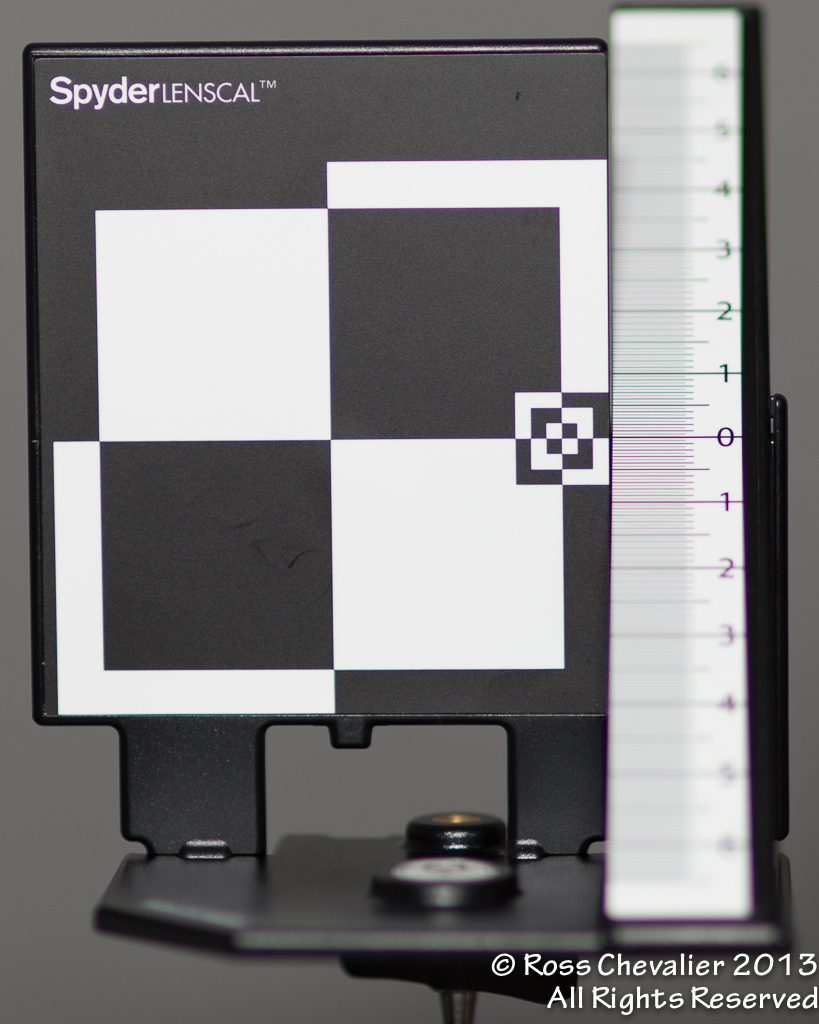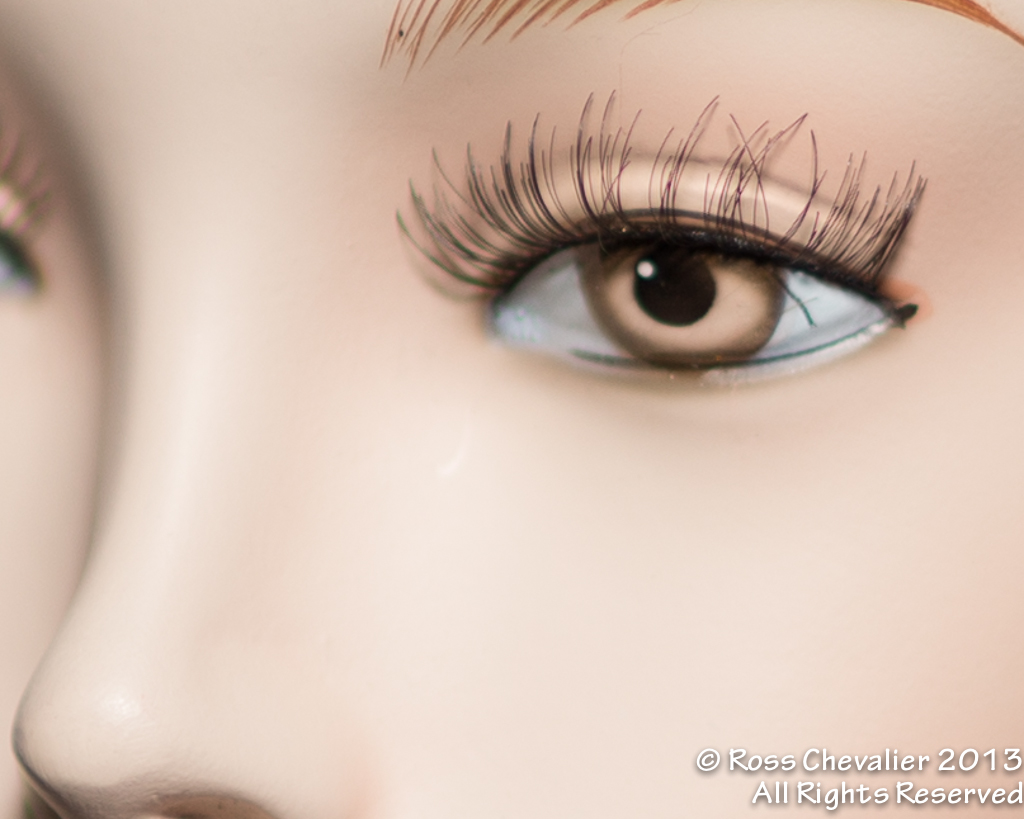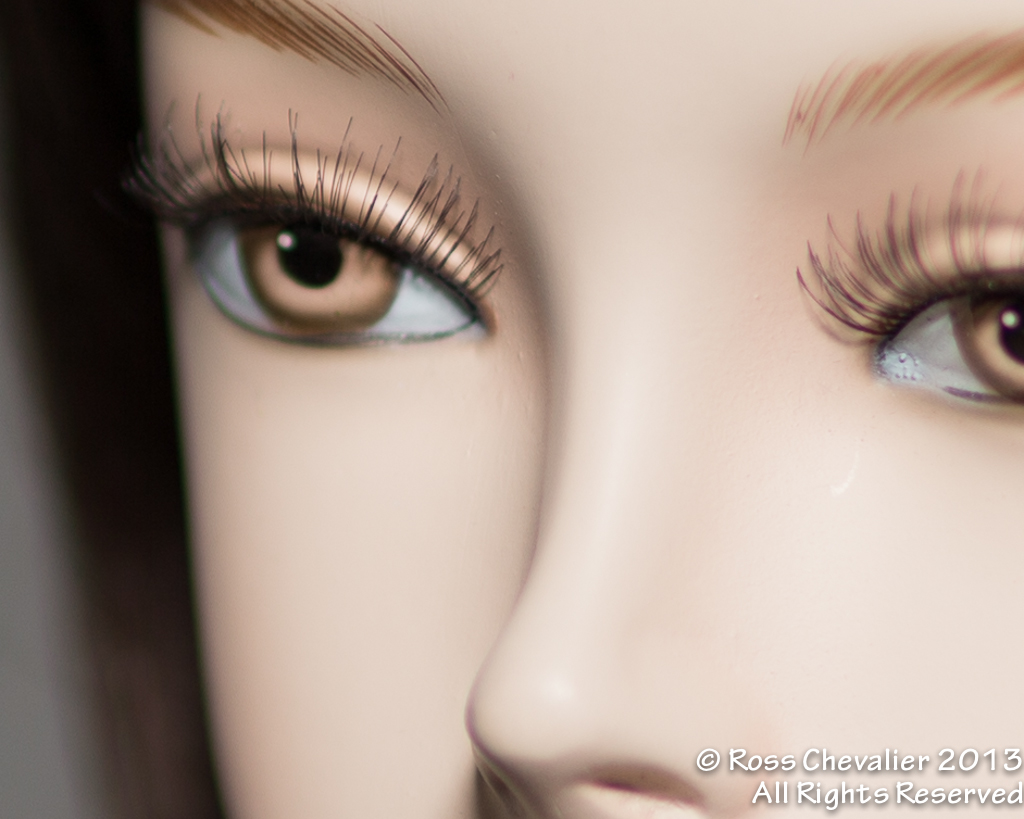I've been wanting a fast 85mm for portraits and to use that razor thin depth of field wide open. While super fast lenses help in low light, it's really the shallow depth of field that puts them in demand over the 1/2 to 2/3 stop slower variants that cost a lot less and are typically as sharp if not sharper.
I had purchased Canon's 85/1.8 and I just didn't like it. Perhaps I had a bad one but there was a lot of chromatic aberration wide open and it just didn't feel right.
I arranged to do testing on the two 85mm lenses I had narrowed the field to, the Sigma 85/1.4 and the Canon 85/1.2L. I left out the Zeiss 85/1.4 because I wanted to retain autofocus for the comparison but I may yet go have a look at the Zeiss as focusing is not that big a deal for me.
I did my testing using a Canon 1Dx shooting in manual after metering off a grey card. The camera was tripod mounted and all shots were tripped using the 2s self timer. Illumination was provided by the awesome Kino Flo DIVA Lite. All focus testing was done in camera and each lens was checked for focus using a SpyderLENSCAL and for colour using a SpyderCHECKR.
The sample images were shot in RAW format and imported to Adobe Lightroom 4.3 Each was white balanced in Lightroom using the white balance eyedropper off the SpyderCHECKR according to the instructions.
All images received the benefit of Lightroom's Lens Profile Correction function and in both cases, it as usual, made a positive difference.
Sigma 85mm f/1.4

This lens comes out of the box feeling very well made. It takes a 77mm filter and includes a petal style bayonet hood. It also includes a hood adapter for when used on a crop sensor body, a very nice touch. It comes packed in Sigma's padded nylon case and has Sigma's excellent 10 Year Warranty.
The lens mounts up without issue and meters consistently with other lenses at like apertures. Autofocus tends to hunt in low light doing a sweep past focus and then backing in to sharpness. Autofocus performance was good in terms of time to achieve focus.
I felt that the images just weren't sharp though and

after reading other reviews, I'm not alone. Some people seem to have received really bad copies, but after some time with the SpyderLENSCAL, I was able to maximize the sharpness by dialing in -12 in microfocus adjustment. It seems like a lot, but the secondary benefit is the removal of seriously bad purple fringing (chromatic aberration).
After shooting the SpyderLENSCAL, and making the required micro-focus adjustments, I went on to colour check and white balance check with the SpyderCHECKR. Colour rendition is pleasant but 300 degrees more yellow than the Canon lens.
The last shots are of my very patient model Sondra, the 
 first with focus locked on the eyelashes of her near eye and the second with focus locked on the eyelashes of the far eye. Multiple shots were made and the ones posted are the best ones.
first with focus locked on the eyelashes of her near eye and the second with focus locked on the eyelashes of the far eye. Multiple shots were made and the ones posted are the best ones.
The lens vignettes heavily wide open as one would expect it to. Using the Lens Profile Correction in Lightroom 4.3 corrected for most of this.

 Even after the corrections, I still find the lens a bit soft. This may not be an issue if one only uses the lens for portraits. Knowing that the depth of field is very narrow at 1.4 I focused precisely and checked with a loupe. It's certainly not awful and for many people would be more than acceptable.
Even after the corrections, I still find the lens a bit soft. This may not be an issue if one only uses the lens for portraits. Knowing that the depth of field is very narrow at 1.4 I focused precisely and checked with a loupe. It's certainly not awful and for many people would be more than acceptable.
Canon 85mm f/1.2L II


The Canon lens comes out of the box with a recommendation that you practice wrist curls. It's enormous. Filter size is 72mm which is annoying considering that most of my other lenses are 77mm. Construction is very solid and the focus ring is incredibly smooth, a virtue of the ring based USM motor. The downside is that this makes the autofocus slow. If you switch off a speed demon like the 70-200/2.8L to this, you might think your camera has broken, it's that slow. This really bugged me when I first tested this lens but I am slowly (pun intended) getting used to it. I'm told that the first series of this lens was two times slower. That would mean a glacier could move before focus was complete. Slow focus is the biggest downer on this lens.
The lens comes with a soft case, not nearly as protective as the Sigma case and includes traditional barrel hood. No compensator is provided for use on a crop sensor camera, so points on this little thing go to Sigma.

 I checked the focus using the SpyderLENSCAL and discovered that no micro focus adjustment was necessary. In observing the zoomed images I detected none of the fringing I saw in the Sigma lens.
I checked the focus using the SpyderLENSCAL and discovered that no micro focus adjustment was necessary. In observing the zoomed images I detected none of the fringing I saw in the Sigma lens.
Next I shot the SpyderCHECKR for colour rendition. Colour is lovely with this lens although it shoots about 100 degrees cooler than Canon's 100/2.8L Macro. Not a big deal, and more consistent lens to lens than with the Sigma which is noticeably warmer.

 Then I moved onto shooting Sondra again, first her left (near) eyelashes in focus and then the right (far) eyelashes in focus. As with the Sigma I made multiple exposures and selected the best ones to include here after viewing them on the large screen.
Then I moved onto shooting Sondra again, first her left (near) eyelashes in focus and then the right (far) eyelashes in focus. As with the Sigma I made multiple exposures and selected the best ones to include here after viewing them on the large screen.
Vignetting is well evident when shooting wide open and again Lightroom's Lens Profile Correction function comes to the rescue.
I felt that the Canon lens was sharper. Overall I think it is a lot sharper. I never got the sense that there was any softness or hesitancy in locking focus, it just takes a long time to get there. Manual focus is smooth and fast, and for this reason I will take a look at the Zeiss MF lens since neither of these lenses is rocket powered when it comes to autofocus performance.
Conclusion
I've included the specs at the bottom of the article and include common street price here in Canada. The Canon is twice the purchase price and the AF is much slower. The Sigma does a good job but still feels soft even after tuning the micro focus adjustment. In controlled lighting both exhibit good contrast but again I think that the Canon has a slight edge here. Both are very good lenses, with positives and negatives in both cases. In the right hands for the right task, either could be a solid performer. At this point I am still undecided pending a look at the Zeiss option.
Specifications
|
Canon 85/1.2L II USM |
Sigma 85/1.4 EX DG HSM |
| Focal Length (FF) |
85mm |
85mm |
| Maximum Aperture |
f/1.2 |
f/1.4 |
| Filter Size |
72mm |
77mm |
| Weight |
1025g |
727g |
| Closest Focus |
95 cm |
85 cm |
| Angle of View |
28°30” |
Not specified |
| Construction |
8 Elements / 7 Groups |
11 Elements / 8 Groups |
| Warranty |
1 Year |
10 Years |
| Street Price |
$2,299.99 |
$1,229.99 |






















